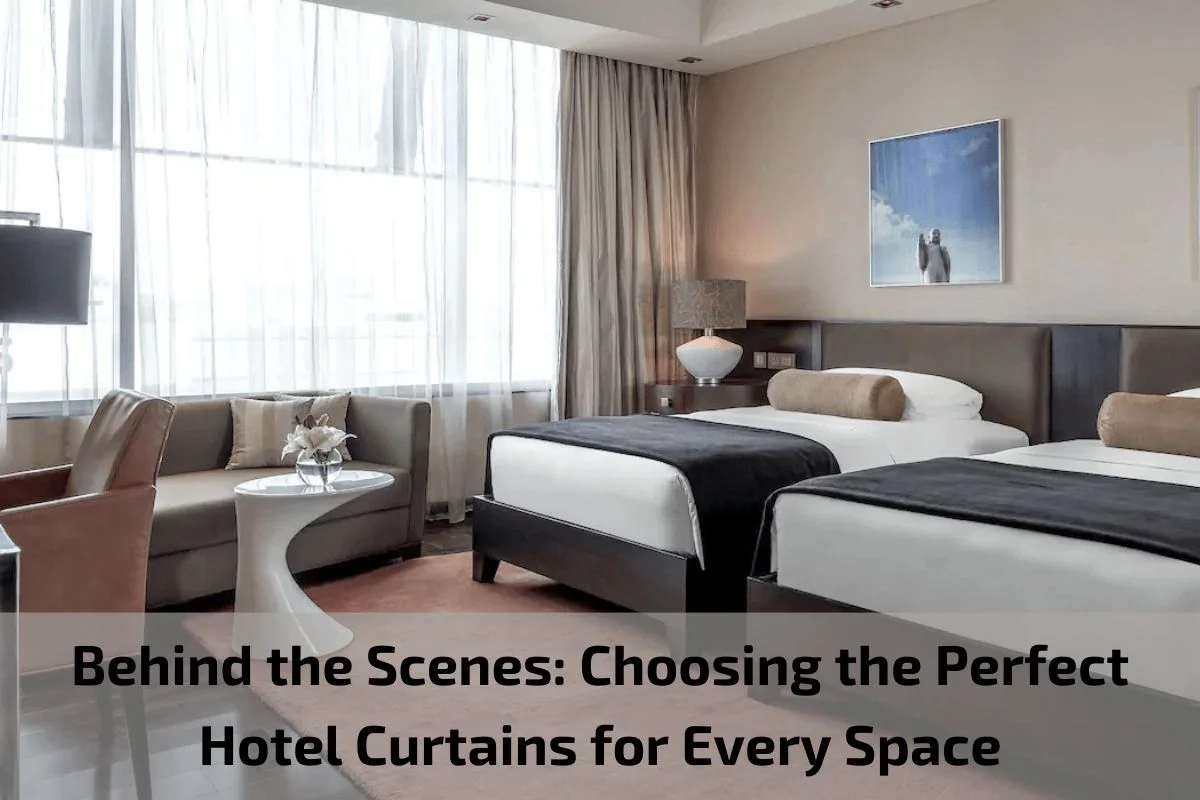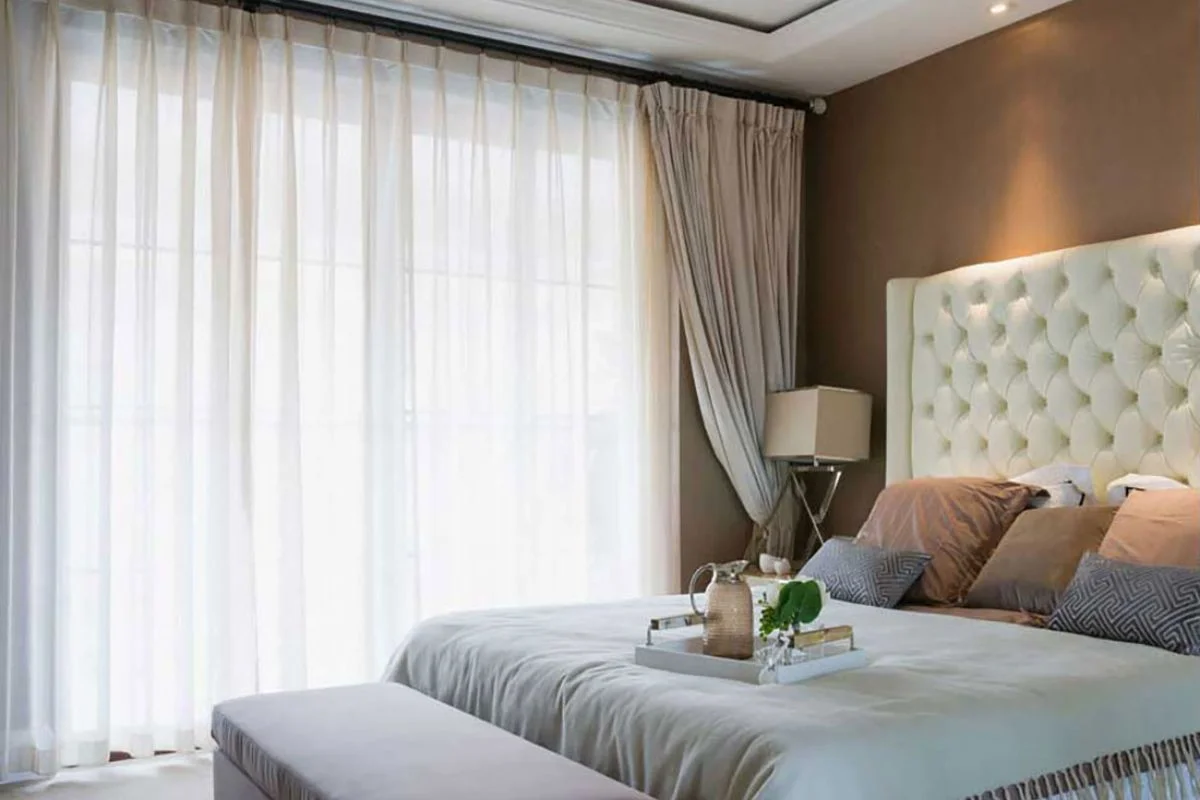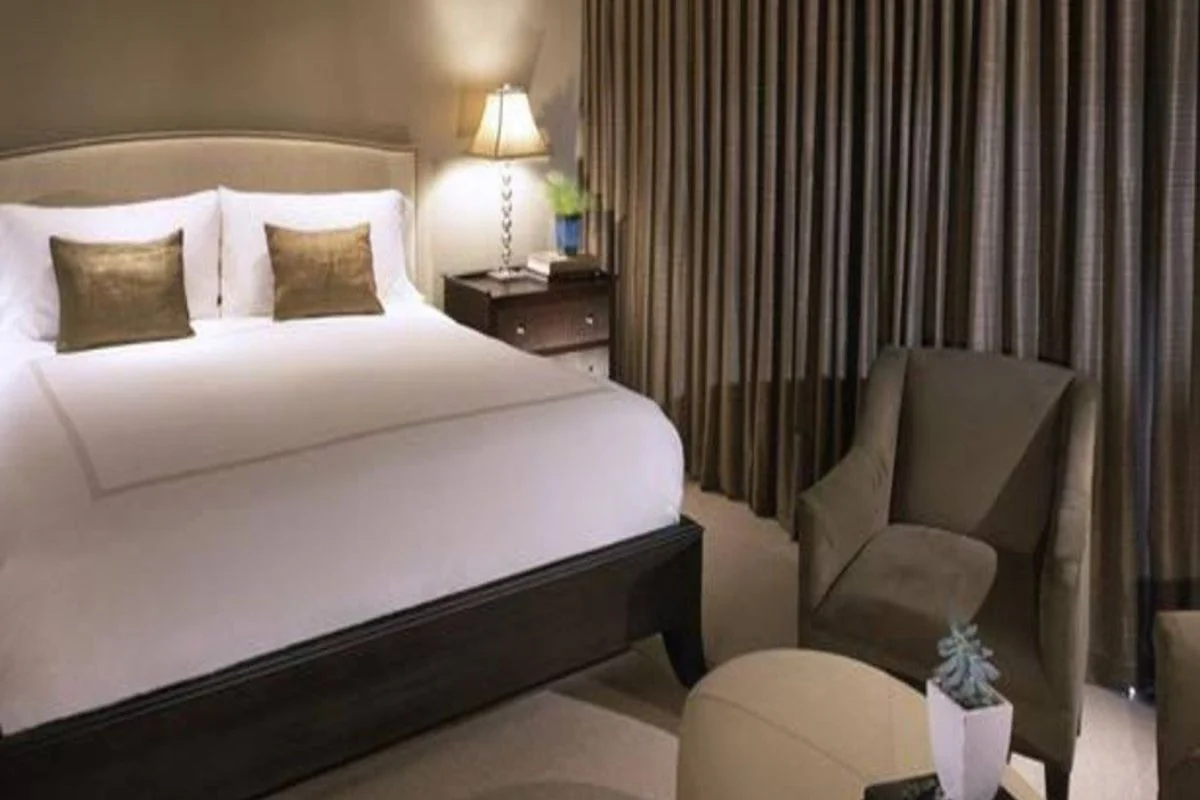Selecting the ideal curtains for hotel spaces entails more than just choosing fabrics and colors; it’s about creating an ambiance that enhances guest comfort and elevates the overall experience. Behind the scenes of every well-appointed hotel room or public area lies a thoughtful process of selecting curtains tailored to suit the space’s functionality, design aesthetic, and brand identity.
Hotel curtains serve as integral elements in establishing the atmosphere and character of a hotel space. From welcoming guests into the lobby to providing privacy and tranquility in guest rooms, the curtains play a crucial role in shaping the guest experience.
In this article, we delve into the intricacies of choosing the perfect hotel curtains for every space. We explore the considerations that hoteliers and designers must take into account, ranging from practical factors like light control and soundproofing to design elements such as fabric selection and customization options. Join us as we uncover the behind-the-scenes process of curating curtains that contribute to the overall ambiance and functionality of hotel environments, ensuring a memorable and satisfying stay for guests.
Importance of Hotel Curtains in Guest Experience
Hotel curtains play a significant role in shaping the overall guest experience, contributing to both comfort and ambiance during their stay. Here are several key reasons highlighting the importance of hotel curtains:
Privacy and Comfort:
- Hotel curtains provide guests with a sense of privacy and security, allowing them to retreat from the outside world and unwind in their own personal space.
- The ability to control the level of privacy by adjusting the curtains according to personal preference enhances the overall comfort of guests during their stay.
Light Control:
- Curtains in hotel rooms enable guests to regulate the amount of natural light entering the space, allowing for a restful environment conducive to relaxation and sleep.
- Effective light control also ensures that guests can create a suitable ambiance for various activities, such as working during the day or enjoying a peaceful night’s sleep.
Soundproofing and Noise Reduction:
- Well-designed hotel curtains can help mitigate external noise, providing guests with a quiet and peaceful environment conducive to rest and relaxation.
- By effectively blocking out unwanted sounds from neighboring rooms or outside traffic, curtains contribute to a more restful and enjoyable stay for guests.
Enhancing the Aesthetic Appeal:
- Hotel curtains serve as decorative elements that contribute to the overall ambiance and design aesthetic of the room.
- Thoughtfully selected curtains can add warmth, texture, and visual interest to the space, creating a welcoming and inviting atmosphere for guests to enjoy.
Brand Image and Identity:
- The choice of curtains reflects the hotel’s brand identity and commitment to guest comfort and satisfaction.
- Curtains that align with the hotel’s design theme, color palette, and overall ambiance contribute to a cohesive and memorable guest experience, reinforcing the hotel’s brand image.
Customization and Personalization:
- Offering a variety of curtain options allows hotels to cater to the diverse preferences and needs of their guests.
- By providing customization options such as fabric choices, patterns, and styles, hotels can create a personalized and memorable experience for guests, enhancing their overall satisfaction.
Factors to Consider When Choosing Hotel Curtains
When selecting curtains for hotel spaces, several important factors come into play to ensure that they meet the functional and aesthetic requirements of the environment. Here are key considerations to keep in mind:
Functionality:
- Light Control: Evaluate the degree of light blockage required in hotel rooms based on factors such as location, orientation, and guest preferences.
- Privacy: Choose curtains that offer sufficient privacy for guests while allowing flexibility in adjusting the level of visibility as needed.
- Sound Absorption: Consider the thickness and density of curtain fabrics to help reduce external noise and create a more peaceful environment for guests.
Design and Aesthetics:
- Theme and Décor: Select curtains that complement the overall design theme and aesthetic of the hotel, whether it’s modern, traditional, minimalist, or boutique.
- Color and Pattern: Choose curtain colors and patterns that harmonize with the room’s color scheme and decor accents, enhancing visual appeal and creating a cohesive look.
- Texture and Fabric Type: Consider the texture and feel of curtain fabrics to ensure they align with the desired ambiance and level of luxury in the hotel rooms.
Fabric Selection:
- Durability: Opt for high-quality fabrics that are durable and long-lasting, capable of withstanding frequent use, cleaning, and exposure to sunlight.
- Maintenance: Choose fabrics that are easy to clean and maintain, minimizing the need for frequent replacements and ensuring a consistently fresh and inviting appearance.
- Fire Retardancy: Prioritize curtain fabrics that meet fire safety standards and regulations, enhancing guest safety and compliance with building codes.
Customization Options:
- Tailored Fit: Consider custom-made curtains to ensure a precise fit for windows and doors, minimizing light leakage and enhancing overall functionality.
- Personalization: Explore customization options such as monogramming, embroidery, or decorative trims to add a personalized touch and reinforce the hotel’s branding and identity.
- Versatility: Choose curtains with versatile design features that allow for different styling options, such as blackout linings, sheer overlays, or adjustable tiebacks, to accommodate varying guest preferences and room configurations.
Trends in Hotel Curtain Design
Hotel curtain design trends continually evolve to meet the changing preferences of guests and reflect the latest developments in interior design. Here are some prominent trends in hotel curtain design:
Sustainable Solutions:
- Increasing demand for eco-friendly materials and production methods in curtain manufacturing.
- Use of sustainable fabrics such as organic cotton, linen, or recycled materials to minimize environmental impact.
- Implementation of energy-efficient curtain designs to reduce energy consumption and promote sustainability in hotel operations.
Smart Technology Integration:
- Adoption of automated curtain systems controlled by smart devices or room management systems.
- Incorporation of motorized curtain tracks for seamless operation and convenience for guests.
- Integration of sensors and timers to automate curtain movements based on daylight, occupancy, or guest preferences.
Minimalist and Contemporary Styles:
- Preference for clean lines, sleek designs, and minimalist aesthetics in curtain patterns and textures.
- Emphasis on neutral color palettes, monochromatic schemes, and understated elegance to create a modern and sophisticated ambiance.
- Incorporation of geometric patterns, abstract motifs, or subtle textures to add visual interest without overwhelming the space.
Versatility and Flexibility:
- Introduction of multipurpose curtain solutions that offer flexibility in light control and privacy options.
- Use of layered curtain treatments such as sheer overlays, blackout linings, and adjustable drapery panels to accommodate varying guest preferences and room conditions.
- Integration of convertible curtain designs that can be easily adjusted or transformed to adapt to different times of the day or guest activities.
Customization and Personalization:
- Growing demand for personalized curtain designs tailored to match the unique branding and identity of each hotel.
- Incorporation of custom prints, patterns, and logos to create distinctive and memorable curtain treatments.
- Offering guests the option to choose from a selection of curtain styles, fabrics, and colors to create a personalized experience during their stay.
Practical Tips for Hotel Curtain Maintenance
Maintaining hotel curtains is essential to preserve their appearance, functionality, and longevity. Here are some practical tips for effective curtain maintenance:
Regular Cleaning:
- Establish a routine schedule for cleaning hotel curtains to prevent dust and dirt buildup.
- Vacuum curtains using a soft brush attachment to remove surface dust and debris.
- For machine-washable curtains, follow manufacturer’s instructions for washing and drying to maintain fabric quality.
Spot Cleaning:
- Address stains and spills promptly by spot cleaning with a mild detergent and water solution.
- Test the cleaning solution on a small, inconspicuous area of the curtain first to ensure colorfastness.
- Blot stains gently with a clean cloth or sponge, avoiding vigorous rubbing that may damage the fabric.
Professional Cleaning:
- Schedule periodic professional cleaning for hotel curtains to remove deep-seated dirt and stains.
- Hire reputable cleaning services experienced in handling delicate curtain fabrics and treatments.
- Consider dry cleaning for curtains that require specialized care or are labeled as dry-clean only.
Inspect for Wear and Tear:
- Regularly inspect curtains for signs of wear, tear, or damage, such as fraying edges, loose seams, or fading.
- Replace worn-out curtains promptly to maintain a fresh and well-maintained appearance in hotel rooms and public areas.
- Pay attention to curtain hardware and tracks for smooth operation and stability.
Preventive Measures:
- Use curtain liners or fabric protectors to prolong the lifespan of curtains and shield them from sunlight and moisture.
- Install curtain tiebacks or holdbacks to keep curtains neatly arranged and prevent them from dragging on the floor.
- Rotate curtains periodically to distribute wear evenly across the fabric and prevent one-sided fading or damage.
Addressing Odors:
- Eliminate musty odors or mildew by airing out curtains in well-ventilated areas.
- Use fabric fresheners or odor-neutralizing sprays designed for curtains to refresh and deodorize the fabric.
- Consider using curtain liners infused with odor-absorbing materials to maintain a fresh and inviting atmosphere.
Train Staff:
- Provide training to housekeeping staff on proper curtain care techniques and maintenance procedures.
- Educate staff on handling different types of curtain fabrics and treatments to avoid accidental damage during cleaning or handling.
Conclusion
Effective maintenance of hotel curtains is essential for preserving their appearance, functionality, and overall quality. By implementing a proactive approach to curtain care, hoteliers can ensure that curtains remain clean, fresh, and inviting, enhancing the guest experience and maintaining the hotel’s reputation for excellence.
ABU DHABI SHOWROOM
Abu Dhabi Island, Al Salam Street
Behind Abu Dhabi Municipality and FAB bank
Heirs. Of Ibrahim G. Sultan Al Suwaidi Building
ONLINE FURNITURE – Showroom no. S2
Abu Dhabi,
Landline: 02 55 66 748
Phone : 056 600 9626, 0567 023 023, 02-67-21-444
DUBAI BRANCH
Risala Furniture LLC 9 24 A street, Al Quoz 1 Dubai – United Arab Emirates
Landline: 04-2959449
Phone: 056-600-9626




